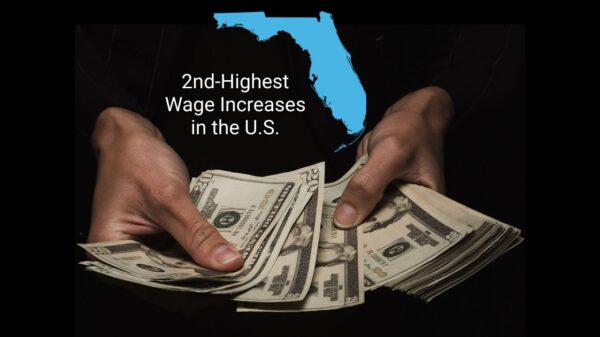Florida still has bragging rights on top economic numbers compared to other states, but some changes will need to be addressed concerning challenges the state may face in the upcoming years.
A mid-year analysis by the Florida Chamber of Commerce details the progress the state is making among key sectors of the economy, including population, workforce, economic diversification, tech, and real estate.
Jobs:
Analysis by the Chamber’s economists found the state is creating 1 in every 11 new U.S. jobs, and there are 93 job seekers for every 100 positions, but this indicates there is a talent availability and skills shortage. The report calls for lawmakers and businesses to prioritize Workforce & Career Development on upskilling, training, exploring untapped talent pipelines (ex., disconnected youth), and helping to remove barriers to workforce participation, such as those created by childcare challenges.
Population Increase and Changing Demographics:
The Chamber says the makeup of Florida’s population growth will have a significant impact on its workforce, projecting that elderly and retired individuals may be making up a disproportionate share of population growth in Florida, while certain age groups may be leaving faster than they are arriving.
Florida’s Diversified Economy:
The state’s economy is often described as solely a tourism based and hospitality. But the mid-year analysis shows growth in additional high-value fields like Financial Activities and Manufacturing, sparking further diversification in Florida’s economy.
The Tech & Innovation Impact:
Florida currently ranks 4th in the nation for tech jobs and 14th for research and development (R&D) funding. The report showcases recent wins for Florida’s tech and innovation sector and how ongoing strategic investments can solidify Florida’s position as a global leader, ultimately bolstering its businesses, workforce, and economy.
Housing & Real Estate:
Workforce housing has been an “under the radar story” as an issue that needs to be looked at. The Chamber says their analysis shows that Florida’s housing supply is starting to match pre-pandemic levels, sparking hope for a more sustainable and predictable housing market moving forward.
The report also sheds light on the those without a high school diploma or equivalent and the rising childcare costs are creating gaps in the workforce that could be closed through the efforts of the Future of Work Florida Initiative and the Florida Business Alliance for Early Learning Project.
Manufacturing
The state has been making progress over the last decade. The mid-year report shows Florida’s manufacturing industry to be top 5 in the country by 2030 could lead to nearly $7 billion in additional earnings.























